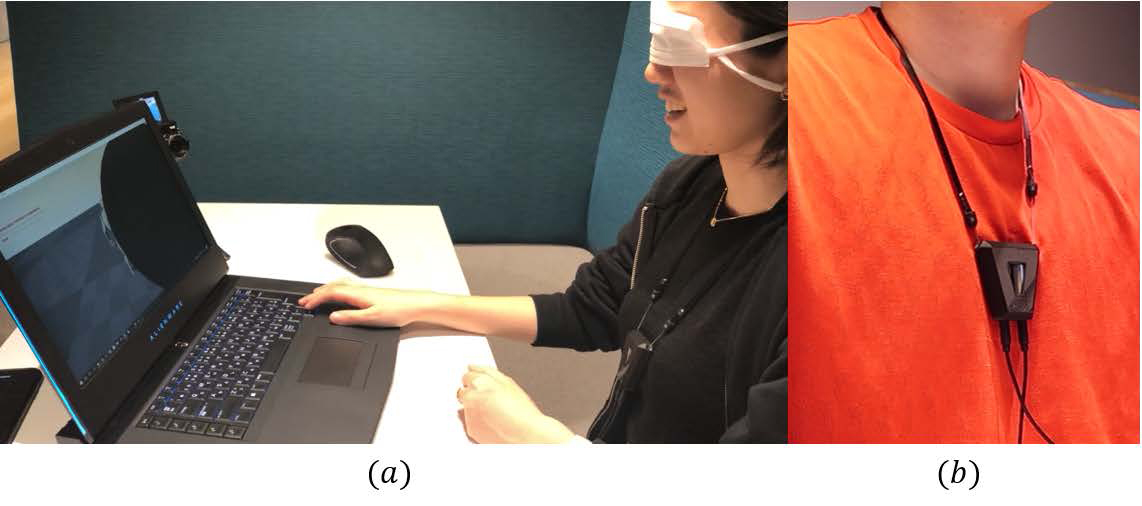“Neck Strap Haptics: An Algorithm for Non-visible VR Information Using Haptic Perception on the Neck” by Yamazaki, Hasegawa, Mitake and Shirai
Conference:
Type(s):
Entry Number: 60
Title:
- Neck Strap Haptics: An Algorithm for Non-visible VR Information Using Haptic Perception on the Neck
Presenter(s)/Author(s):
Abstract:
In this poster, we propose a new haptic rendering algorithm that dynamically modulates wave parameters to convey distance, direction, and object type by utilizing neck perception and the Hapbeat-Duo, a haptic device composed of two actuators linked by a neck strap. This method is useful for various VR use cases because it provides feedback without disturbing users’ movement. In our experiment, we presented haptic feedback of sine waves which were dynamically modulated according to direction and distance between a player and a target. These waves were presented to both sides of the users’ necks independently. As a result, players could reach invisible targets and immediately know they had reached the targets. The proposed algorithm allows the neck to become as important a receptive part of body as eyes, ears, and hands.
References:
- Marco Bove, Manuela Diverio, Thierry Pozzo, and Marco Schieppati. 2001. Neck muscle vibration disrupts steering of locomotion. Journal of Applied Physiology 91, 2 (2001), 581–588.
- H. Hogema, S. C. De Vries, J. B. F. Van Erp, and R. J. Kiefer. 2009. A Tactile Seat for Direction Coding in Car Driving: Field Evaluation. IEEE Transactions on Haptics 2, 4 (Oct 2009), 181–188. https://doi.org/10.1109/TOH.2009.35
- Yuri P Ivanenko, Renato Grasso, and Francesco Lacquaniti. 2000. Neck muscle vibration makes walking humans accelerate in the direction of gaze. The Journal of physiology 525, 3 (2000), 803–814.
- Lynette A Jones, Jacquelyn Kunkel, and Erin Piateski. 2009. Vibrotactile pattern recognition on the arm and back. Perception 38, 1 (2009), 52–68.
- Kelly Morrow, Daniel Wilbern, Reza Taghavi, and Mounia Ziat. 2016. The effects of duration and frequency on the perception of vibrotactile stimulation on the neck. In 2016 IEEE Haptics Symposium (HAPTICS). IEEE, 41–46.
- Reza Taghavi. 2015. Tactile communication device for the neck. US Patent 8,926,330.
- Yusuke Yamazaki, Hironori Mitake, and Shoichi Hasegawa. 2016. Tension-based wearable vibroacoustic device for music appreciation. In International conference on human haptic sensing and touch enabled computer applications. Springer, 273–283.
Keyword(s):
Additional Images:






